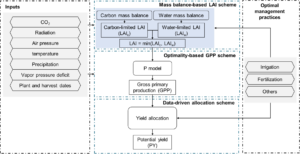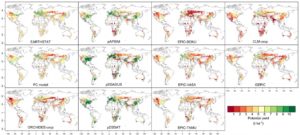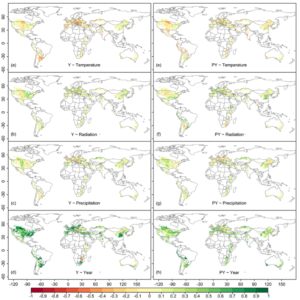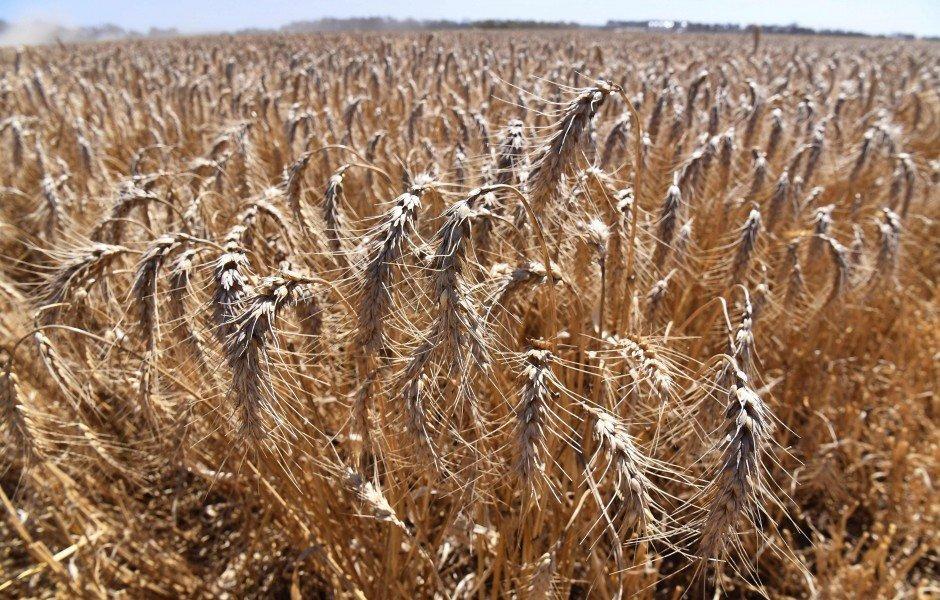Global food security is an ongoing challenge for humanity owing to the continuous growth of global population. Meanwhile, assessment of global food security contributes to the sustainable development goal of ‘No hunger’. Potential crop yields represent the biophysical ‘ceiling’ determined by variety, climate and ambient CO2. As the important part, evaluation of potential crop yields is critical for global food security assessment. Statistical modelling and process-based crop models have both been used to estimate and evaluate potential yields. However, some limitations of statistical approaches and large uncertainties of current process model-based results still remain. Therefore, a more robust way to estimate potential crop yields globally as a function of their growth environment is needed. Recently, Shengchao Qiao and his coauthors published a new paper named “Optimality-based modelling of climate impacts on global potential wheat yield” in Environmental Research Letters (https://iopscience.iop.org/article/10.1088/1748-9326/ac2e38), showing progress towards closing these gaps. The new paper extended their optimality-based wheat model (PC model) from the national to global scale to understand and predict the climatic impacts on global potential wheat yield.
 Figure 1 Structure of the PC model.
Figure 1 Structure of the PC model.
The PC model (Qiao et al., 2020) is hybrid with two separate modules for carbon assimilation and carbon allocation (see Figure 1). The first module (carbon assimilation) combines a parameter-sparse, optimality-based representation of gross primary production (GPP) with a mass balance-based scheme to predict leaf area index dynamic, to derive GPP from climatic variables and CO2 concentration. The second module (carbon allocation) is a data-driven scheme predicting the allocation of GPP to aboveground biomass (AB) and thence to yield. The PC model was initially developed using data from sites in China where wheat was grown under optimal irrigation and fertilization, and has been well tested in irrigated sites of China (see previous paper published in Agricultural and Forest Meteorology, https://doi.org/10.1016/j.agrformet.2020.107932). In the current study, we extended the original version of PC model including a scheme to account for water limitation, hence succeeded in simulating wheat potential yield for rainfed regions.
Using this extended PC model, we predict the spatial and temporal pattern of global potential wheat yield, then assess the climatic impacts on potential wheat yield. The estimations show the PC model captures the magnitude and spatial pattern of potential wheat yield in 2000 CE (from EARTHSTAT observations) better than the process-based models included in ISIMIP (see Figure 2).
 Figure 2 Multi-model comparison of potential yield in the year 2000.
Figure 2 Multi-model comparison of potential yield in the year 2000.
The assessments of climatic impacts (see Figure 3) show high temperatures have negatively affected wheat yield over much of the world. Greater solar radiation is associated with higher yields in humid regions, but lower yields in arid regions. The impacts of precipitation and solar radiation in arid and humid regions are reversed. Greater precipitation is associated with lower yields in humid regions. The positive CO2 fertilization effects on wheat yields are also successfully captured by the PC model. However, the stronger positive trends in actual compared to potential wheat yields found in many regions imply there has also been a positive effect through crop breeding and improved management on actual wheat production.

Figure 3 Partial Pearson correlations of (a-d) actual and (e-h) potential wheat yields from 1981 to 2016 with climate and year.
This study is another demonstration that robust models can be developed using EEO concepts. Meanwhile, this hybrid crop modelling approach is a useful addition to the toolkit for assessing global environmental change impacts on the growth and yield of arable crops.

